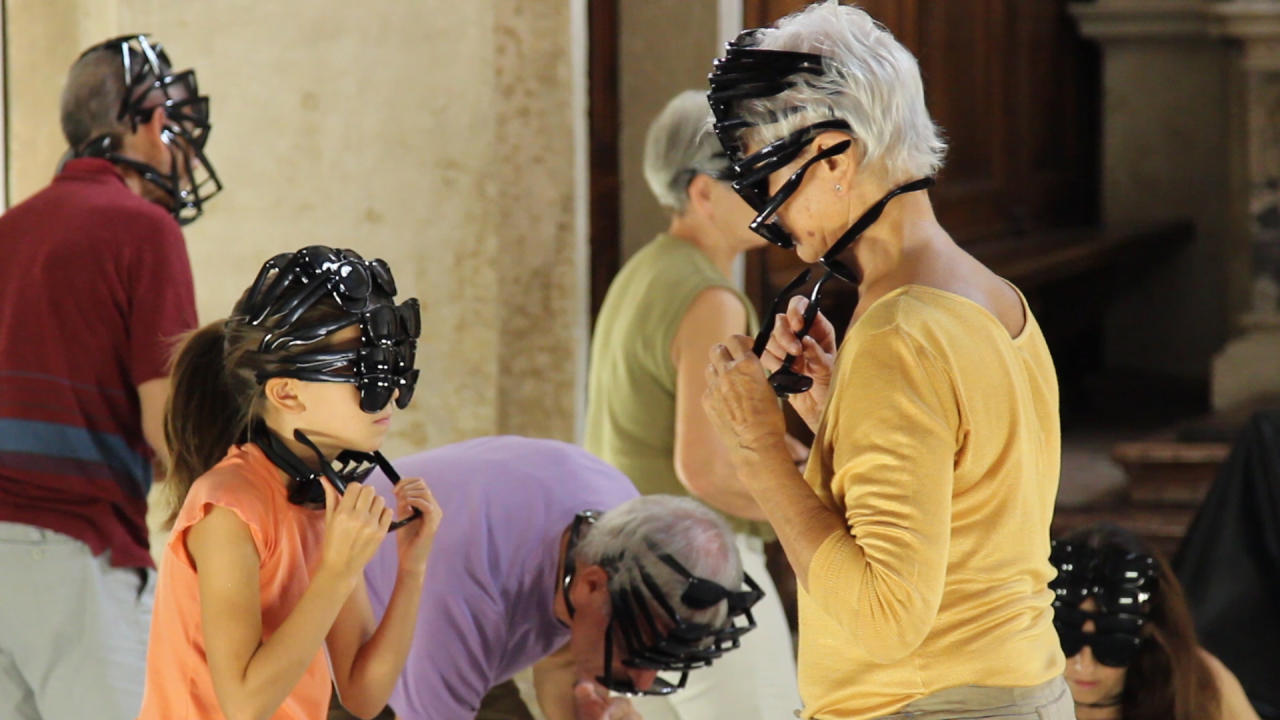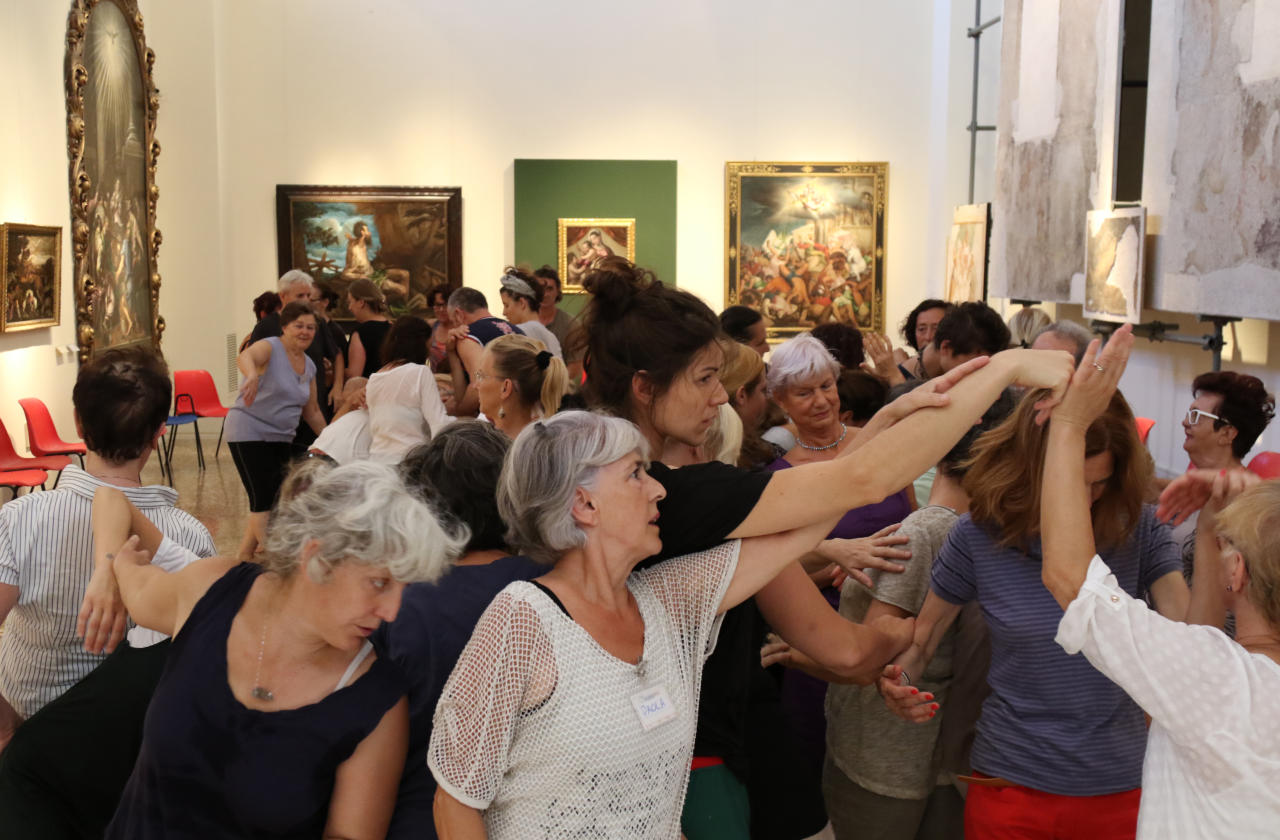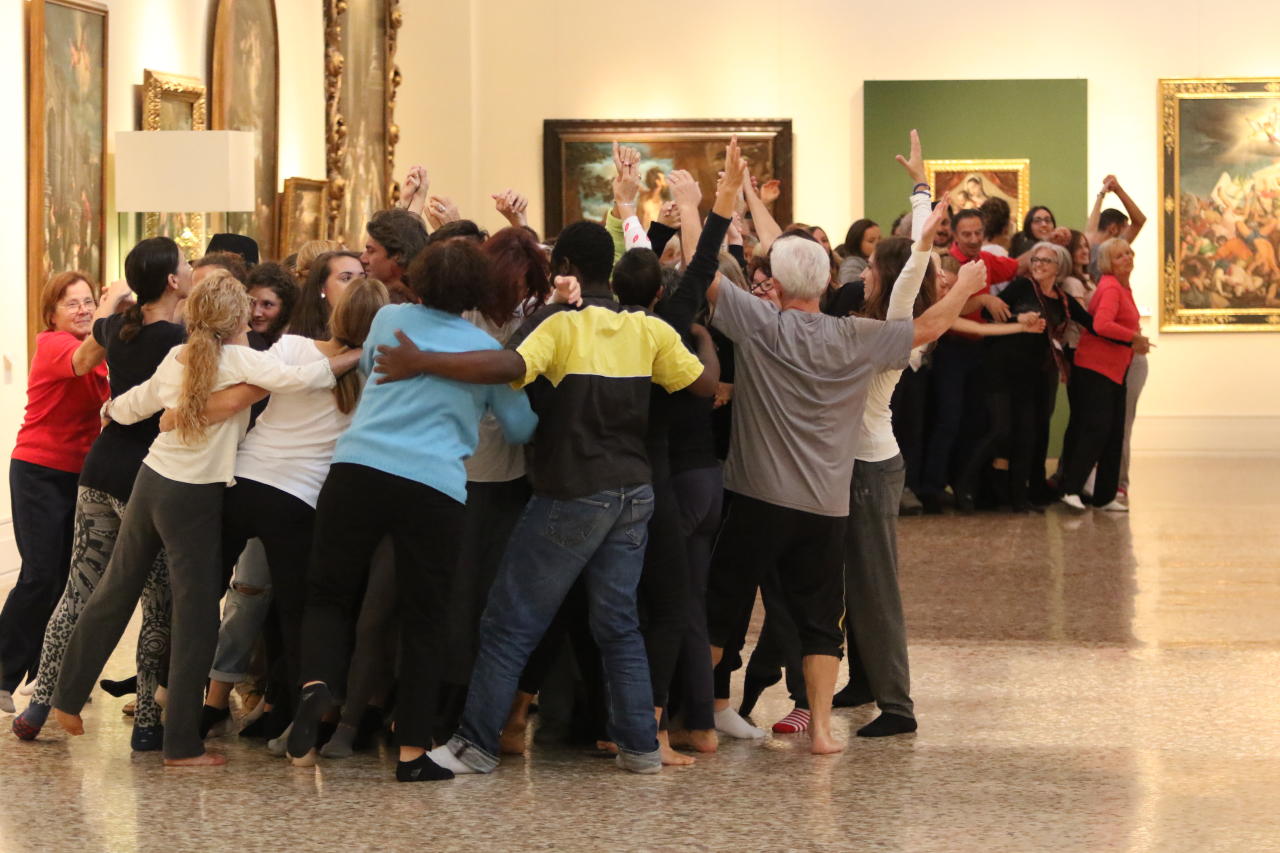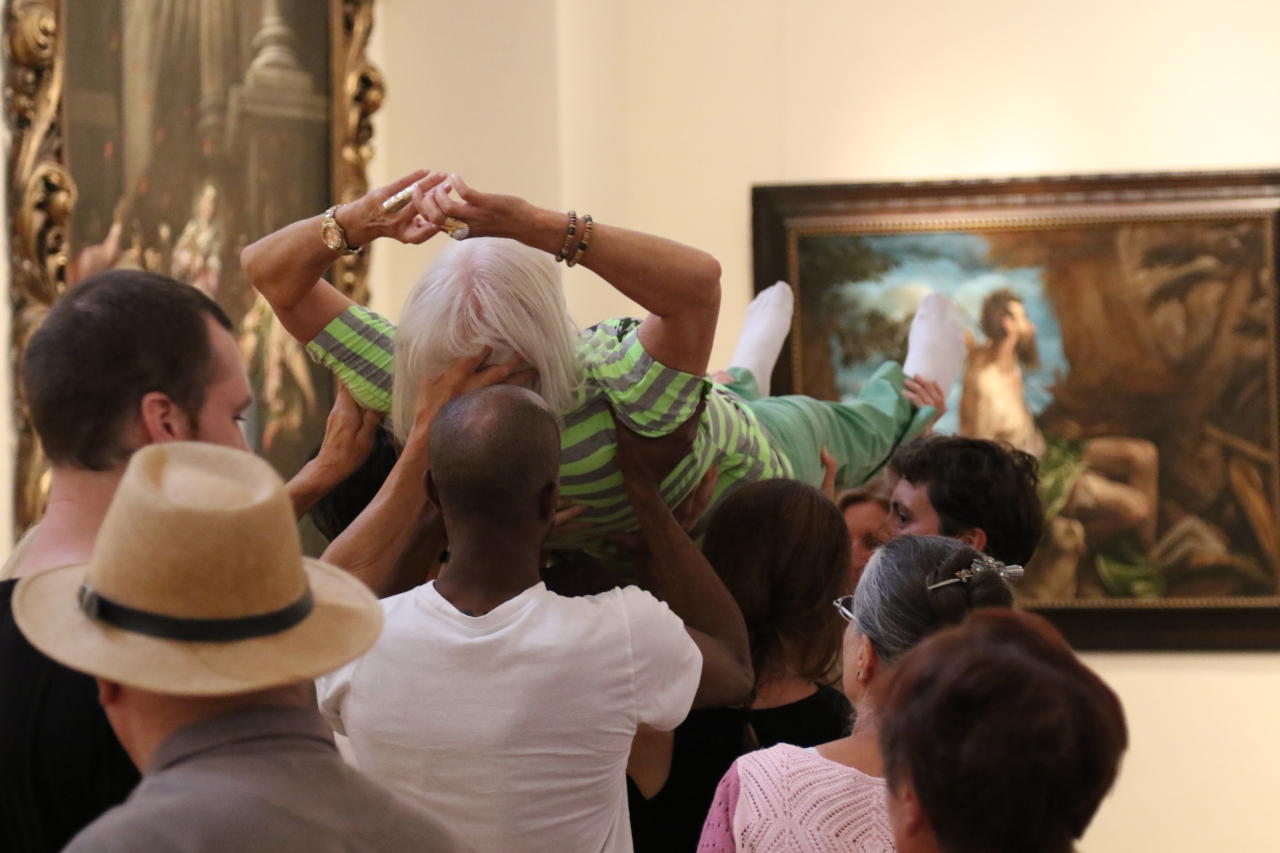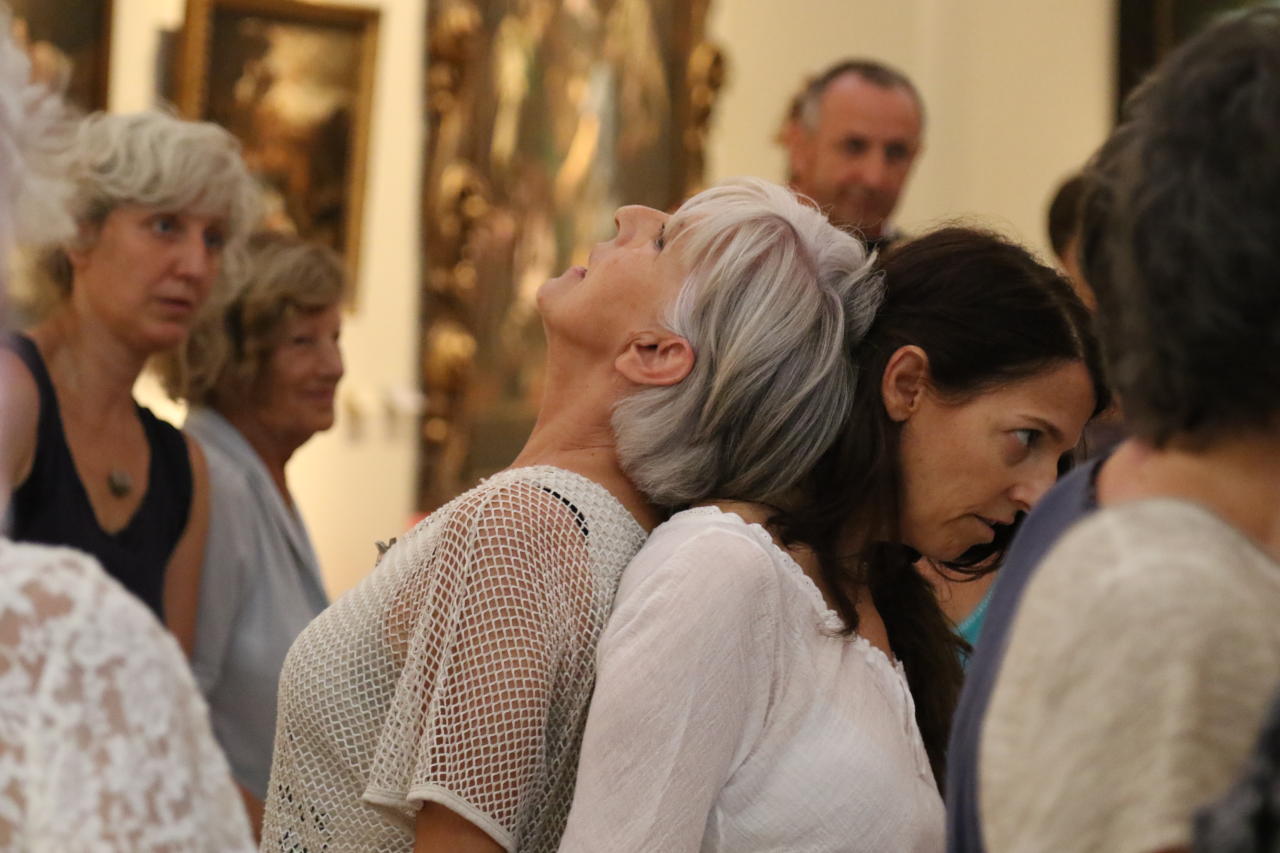Dancing Parkinson’s disease away
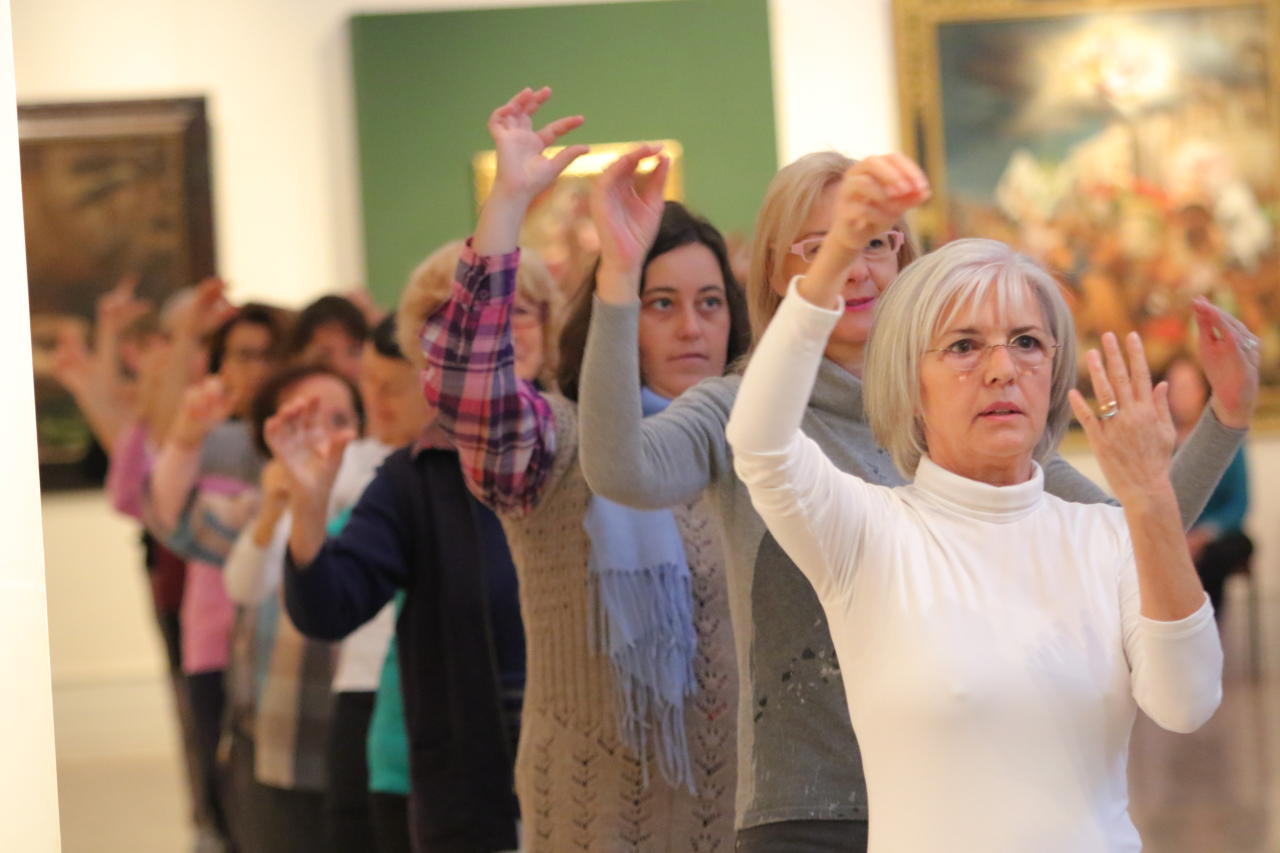
By Adriana Bazzi
Corriere della Sera, Italy
A stage is set in one of the exhibition halls of the Museo Civico (Civic Museum) in Bassano del Grappa, near Vicenza, Italy, during a contemporary art exhibition titled In-colore by an Italian artist, Daniele Marcon. Performers are dancing on the stage. Most are people with Parkinson’s disease, but there are also young – and very young – visitors, immigrants, and people from all walks of life dancing. They are invited to draw inspiration from paintings with geometrical patterns, squares and rectangles, mainly in dark colors, with sharp contrasts and well-defined lines. Their goal is to stimulate the audience’s emotional response, precisely because strong colors can convey the flow of life’s energy.
The performers are part of a contemporary dance initiative called “Dance Well,” using dance as a therapy and integration technique for people with Parkinson’s disease. They take one-hour dance lessons in the museum’s exhibition halls each Monday and Friday.
One Monday morning in April, during a lesson at the Marcon exhibition, the teacher-choreographer invites the participants – about 70 strong – to move along imaginary paths in space, following lines that the paintings on the walls seemed to suggest. They move back and forth, left and right, holding their outstretched arms above their heads or lying on the floor, alone or with a partner. Some seek out their own spaces while others create trajectories that cross other dancers’ paths, resulting in physical contact that can be therapeutic.
“It all started from the idea, later confirmed by scientific research, that contemporary dance can help people who suffer from Parkinson’s disease to improve their ability to move, and therefore their quality of life,” says Daniele Volpe, director of the Neuro-Rehabilitation Department at Villa Margherita in Arcugnano (Vicenza), one of six treatment centers at the Fresco Parkinson Institute in Italy.
Their efforts are all the more vital because Parkinson’s disease is fast becoming a pandemic. Parkinson’s is a degenerative disorder in the brain that causes sufferers to become increasingly hampered in their movement and balance. Experts say there were 6.9 million patients worldwide in 2015 and this number could double by 2040, with devastating economic consequences for health services.
“We need to find new models of treatment and rehabilitation, beyond the conventional methods that have been used so far,” says Volpe. “There is a need to bring on board new professionals, like dance teachers, after undergoing a specific training, of course.”
The Dance Well initiative was launched in 2013 in Bassano del Grappa by Roberto Casarotto, artistic director of the Operaestate Festival Veneto. “This project was inspired by a meeting we had with a Dutch organization called Dance for Health,” explains Casarotto. “But it developed independently, with particular focus on the artistic aspect.”
People generally think of dance therapy as an activity that concentrates exclusively on movement and is carried out in gyms. But in the case of Dance Well, people dance in museum exhibition halls, attempting to translate modern and classic works of art into movement.
“Tango and Irish dancing are invaluable for people affected by Parkinson’s disease,” explains Volpe. “They stimulate specific areas in the brain, such as the motor and sensory cortex, that have an impact on movement. But contemporary dance inspired by art has been shown to stimulate a greater number of cerebral areas such as the limbic system, which enhances emotions and creative processes.”
Eva, 48, has lived with Parkinson’s disease for 15 years. “In the last four years, dance has been a real game changer in my life, and I’ve been able to resume doing what I was doing before the illness,” she says. “But above all, I have overcome the stigma attached to Parkinson’s disease. I don’t feel judged anymore and my self-esteem has increased tremendously.”
Scientific research shows that “the most important aspect is to keep moving,” Volpe says, “because movement can trigger neuroprotective mechanisms in the brain, encourage neuroplasticity and lead to the creation of new synapses. This means we can slow down the disease.”
Some Italian neurologists deplore the excessive use of medication to treat Parkinson’s disease, including dopamine, which can have serious side effects such as uncontrolled movements or even interruption of movement – the so-called freezing effect. Dancing can help reduce the need for drug therapy.
Dance Well focuses primarily on people with Parkinson’s disease, but the project is trying to involve others in the community, namely young people and immigrants. Some 300 people gather every week at the exhibition halls of the Museo Civico.
“Our lessons are open to asylum seekers as well,” says Casarotto. “We believe this initiative can foster integration in the community, and we also have a special project to this end, despite some objections raised by certain politicians.”
After an hour, the dance lesson comes to an end. Some of these performers will have a new audience at the annual Festival Veneto Operaestate Bassano next July. The “Parkinson’s dancers” will step onstage for a short program to show the audience what they have been practicing, proving that disability isn’t always an obstacle. Sometimes it is an opportunity.
Here we are to serve you with news right now. It does not cost much, but worth your attention.
Choose to support open, independent, quality journalism and subscribe on a monthly basis.
By subscribing to our online newspaper, you can have full digital access to all news, analysis, and much more.
You can also follow AzerNEWS on Twitter @AzerNewsAz or Facebook @AzerNewsNewspaper
Thank you!

